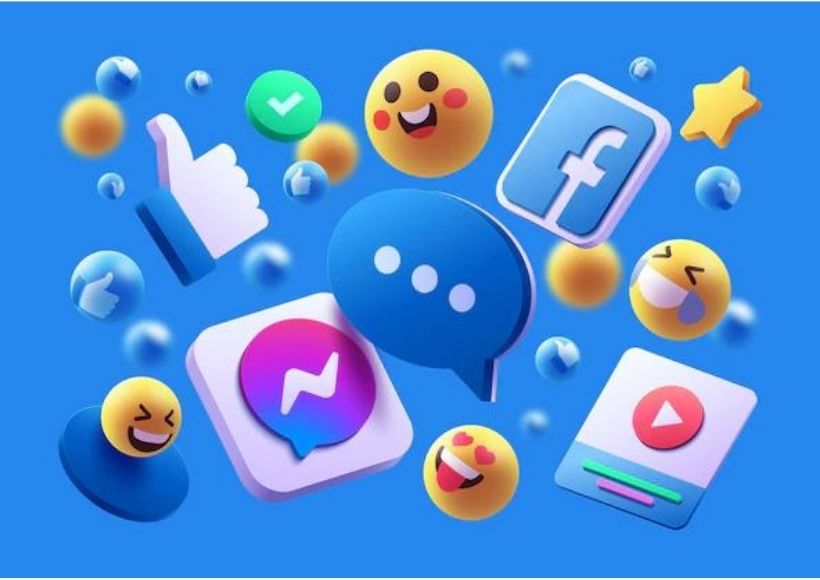The Origins Of Social Networks

The origins of social networks: We cannot miss the opportunity to publish an entry on our blog about social networks. We want to share with you mainly where they come from and how the most relevant ones have emerged. We hope you enjoy the article and find it interesting.
We all know social networks, but most do not know their origin. In this article, we will summaries how they appeared for the first time and how they have evolved until they reach the most used social networks.
What Are The RRSS And Its Types?
Social networks, as we conceive them, are web applications that favour contact between individuals and allow users to contact and establish relationships with each other to share content, interact and create communities on similar interests: work, reading, friendship, love relationships… The types of social networks that exist today can be classified according to the content that is published: text, videos, images, music or work profiles. The most used social networks are Facebook, YouTube, Instagram and TikTok.
Evolution Of Social Networks
The evolution of the RRSS began with the appearance of the first BBS in February 1978 in Chicago (a BBS is a set of computer programs installed on a computer that allowed participating users to connect through a telephone line to a network where they could share and consult different information posted by other participating users), these allowed reading the news and exchanging messages with other users. Still, as many telephone lines as concurrent users were needed, the system would have since if a user occupied the line, it would block the access to others. The origins of social networks Therefore we could say that these boards were the most distant ancestor of the modern social networks that we know today.
Usenet would later be created, a global Internet discussion system that would solve the problem of limiting that line to a single user, allowing users to connect to servers simultaneously.
Users could connect to the servers simultaneously since the groups were distributed on different servers that saved and transmitted messages to each other, always being synchronized.
In the 80s, despite the high level of development and the limitations overcome, the interfaces they used were not intuitive and challenging for the user to understand.
By creating the graphical environment “Lisa” (The Apple Lisa was a computer designed and manufactured by Apple Computer in the early 1980s), Apple managed to create the first friendly and intuitive interface. “We wanted to make a computer as simple to operate as a toaster.”
One of the goals was that when changes had to be made to the operating system “below”, users would not notice that these changes had been made “above” and would not interfere with their experience. (It is unlikely that at that time, they could have imagined the importance that the experiential factor would later have in today’s market).
Based on the Apple interface, Microsoft developed Windows. Its more developed graphical interface, faster connections and the appearance of portable devices favoured Internet access, popularizing the use of social networks.
Pioneering Social Networks
Under this panorama, our two pioneers will appear:
Classmates web was created in 1995 by Randy Conrads, giving rise to the first “modern” social network on the Internet as we currently conceive it. The origins of social networks The purpose of this was that its users could maintain contact with former classmates (indeed, the young Randy was not aware that he was going to prepare with that friendly project to be able to get in touch with the girl he liked in fourth grade or to be able to talk again with his classmates at the University of Oregon).
6 degrees, created in 1997 and launched in 2001, is the other original RRSS struggling with classmates.com for being the great pioneer. The origins of social networks His name came from the theory that any person on Earth can be connected to another through a chain of acquaintances with no more than five intermediaries.
Even today, there are divisions of opinion about which of the two was the first to appear because depending on the criteria used, one or the other comes out as the winner.
First Starters
Subsequently, many specific social networks have appeared for certain sectors with great popularity. Below we provide you with a list of the social networks that have later emerged in chronological order:
Friendster: Founded in 2002, it focused on reproducing social relationships on the Internet. It reached 115M users in 6 years.
Flickr: It started in 2002 and focuses on photo sharing. It reached 120M users in its first six years.
Myspace: created in 2003, focused on the world of music, it managed to reach 150M users in 2008 and surpass Google in network traffic.
Hi5: Started in 2003, with a similar approach to Friendster. In 4 years, it reached 70M users.
LinkedIn: it emerged in 2003 as a meeting point for professionals. Compared to the other networks, it had a slow start, reaching only 30M users in its first five years, although later, in 3 years it went 100M.
Facebook: It was launched on February 4, 2004, by Mark Zuckerberg, along with other Harvard University students and roommates. In 8 years, Facebook managed to have 1,000 million active users worldwide.
The success of these was linked mainly to the fact that, within their general nature, each one of them was aimed at a specific target (target public) that had been little or nothing previously exploited in this area.
From a commercial point of view, each of these teams behind social networks knew how to take full advantage of this business opportunity, each capable of being creatively innovative within this new trend that was social networks.
“If you don’t take advantage of the opportunity, someone else will.”
Most Used Social Networks
In 2020, we all know the great titans that devastate the network as social networks as we conceive them, in order of users worldwide, the ranking is in the following order: 1st Facebook, 2nd YouTube, 3rd Instagram and 4th TikTok—managing all of them, as we well know, scandalous numbers of users.
Many factors have given rise to its overwhelming success. Within this publication, we have decided to focus only on two, perhaps the two most interesting: that users are the content creators of the networks and their new role as first sources of information.
- We could maintain the privacy of our lives. However, we share more and more information related to our private lives within these social networks, our thoughts, locations, videos, photographs, recommendations, etc., giving rise to the fact that the users themselves are the creators of the content of the social networks, within which others will later consume it, there is, therefore, feedback within its operation based on trust in the system (and in the Organic Law of Data Protection, although the vast majority of users do not know what it is or what it is for).
- As a result of the enormous volume of information within these social networks, users have already come to consider them as the first data source compared to traditional media. The origins of social networks This shows us that information consumption habits on the Internet were and are radically changed, and that is that social networks have already managed to establish themselves in the first positions relative to the consumption of information on the Internet, ahead of media such as newspapers or newscasts (it seems a joke that Facebook, that social network for university students to upload the photo of their last night out, is capable of unseating, for example, the Washington Post or the New York Times as a source of information).
Current Situation Of The RRSS
To conclude, we will make a quick sweep of the most relevant aspects of the current situation of social networks.
Without new protagonists: there are currently no platforms that have generated a significant disruption. Perhaps the most exciting thing was the birth of Vero, the ‘anti-system’ app. It does not include advertising and is sold as a natural network where there is no room for posturing.
Influencer marketing: even though influencers continue to play an essential role in social networks and have managed to establish themselves as critical personal brands within a more commercial sphere, we are witnessing a credibility crisis for them.
Social Media Manager: The expert’s role in social networks has evolved. His figure has become relevant within companies since they have understood that new platforms are a place to interact with their followers and within which there is a commercial opportunity.
Safer data: Our data is less and less vulnerable in the digital context, thanks mainly to the necessary and continuous updates of the General Data Protection Regulation.
Artificial intelligence and bots: these “bots” (which we all know as a kind of software that imitates a user’s behavior) are already part of social networks and are here to stay.
Undoubtedly, social networks will continue to play a leading role in our lives, and information travels faster and faster social networks are the “ideal vehicle” for this from what we know to date.
However, it is an illusion to determine where we are heading since everything can change, as has happened with Covid-19. It is always good to know where we come from and understand where we are and heading.
Also Read: SEO Advantages Of Creating A Corporate Blog For Your Business Website




